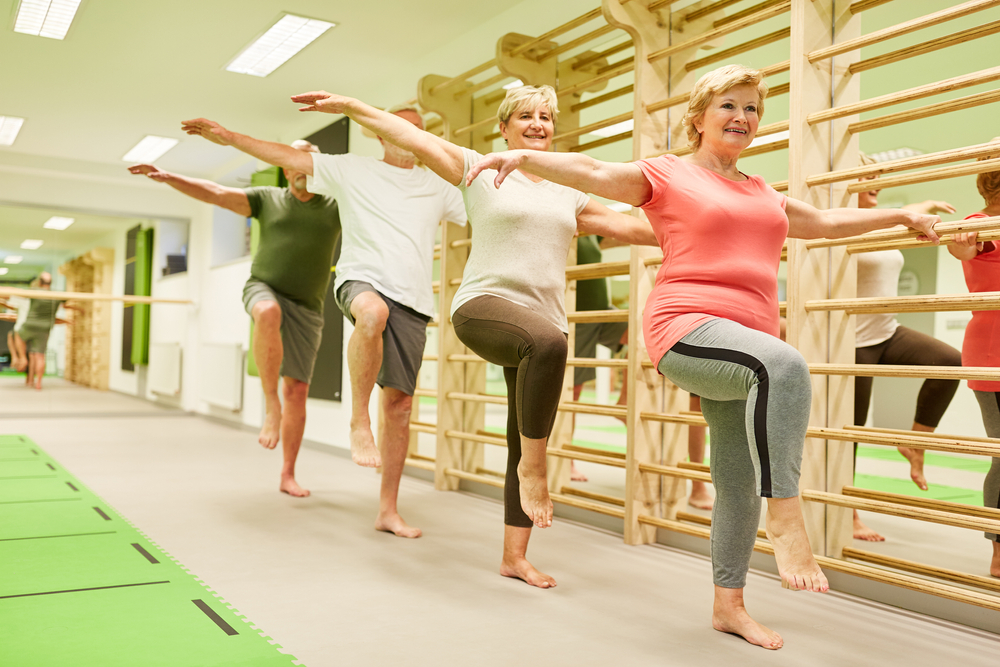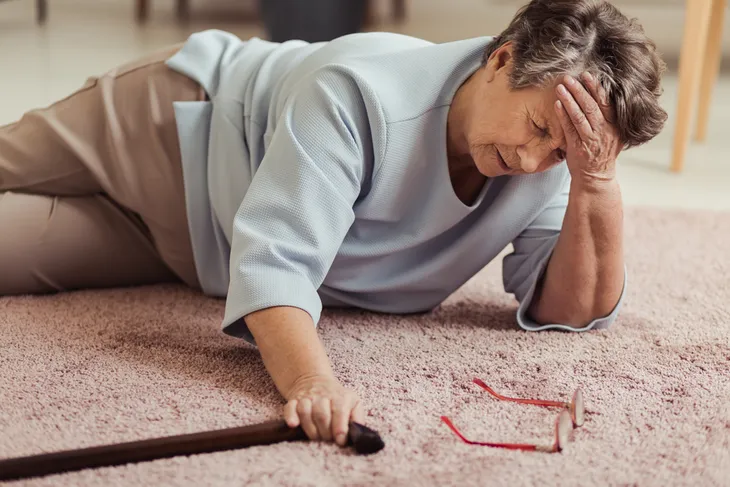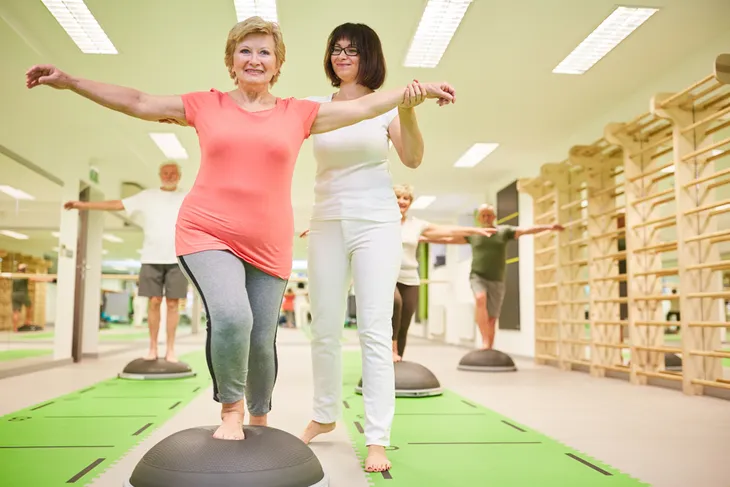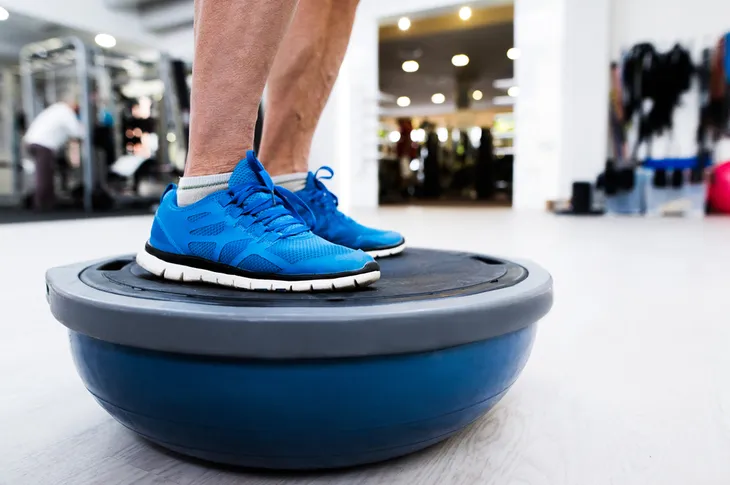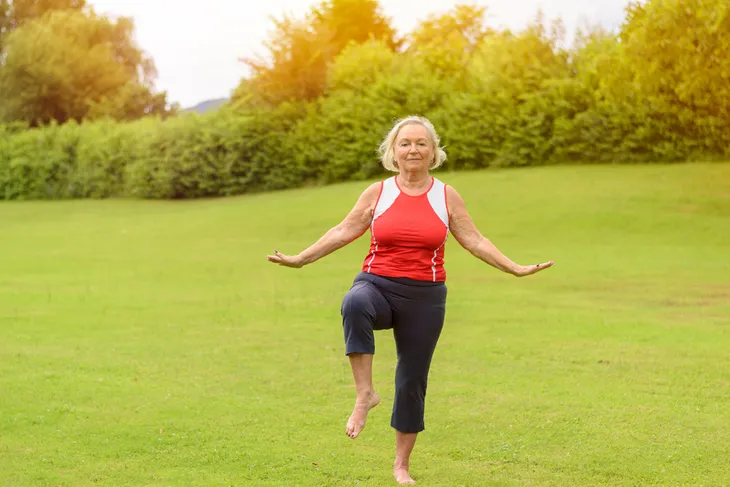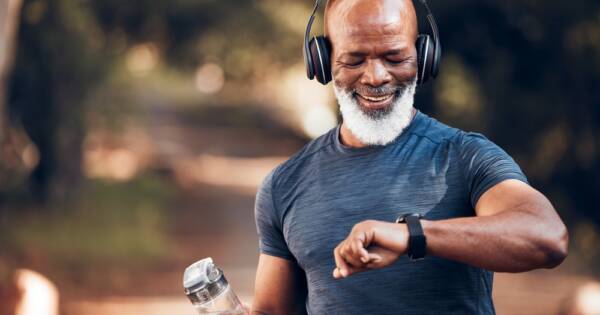Most seniors are concerned about falls, and for good reason! They account for a majority of the injuries procured by adults over the age of 65. In fact, falls account for more than 40-percent of all nursing home admissions and are the leading cause of injury related emergency department visits for older adults. The most common injuries are hip fractures and head injuries. Not only are falls a scary experience for seniors, but they can lead to the loss of independent living.
For the aging adult who takes a fall, they become more nervous about experiencing it again. Their gait and speed of walking will likely change, and even the smallest, imperceptible changes can lead to another fall. So how do we protect against falls, particularly for seniors? The best place to start is by strengthening the body with a few standing balance exercises. Start with a good balance training program.
Want senior content delivered straight to your inbox? Sign up for our exclusive email list and receive articles and news on diet & nutrition, fitness, and mental health dedicated specifically to our senior audience!
Reduce Risk of Falls in Seniors
A recent study done in France showed that exercise can reduce not only the odds of falling but the odds of sustaining fall-related injuries. French researchers analyzed the results of 17 different trials that tested the effect of fall-prevention exercises on seniors’ risk of falls and fall-related injuries. The studies were on 60 years and over aged adults, who lived in senior living communities. Overall, exercise programs reduced falls that caused injuries by 37-percent, falls leading to serious injuries by 43-percent, and broken bones by 61-percent.
Some of the exercise programs were specifically aimed at improving balance. Others were general exercise programs. Although balance training is the main way to help with fall prevention, any exercise that improves endurance, muscle strength, and flexibility can help prevent falls and related injuries.
Benefits of Balance Training for Seniors
Improved Mobility and Reaction Time
All aging adults want to stay mobile for as long as possible. When a fall or fear of falling disrupts this ability, it becomes harder and harder to move around. Balance is the ability to move without falling. It also helps distribute weight in order to hold a stable stationary position. While many people (even young adults) would argue they aren’t good at balance, it’s like anything else in life. The more you practice, the better it will function!
Exercise and balance routines can provide better reaction time. This means catching yourself before you fall, if and when you become unstable. A faster reaction time can help keep you upright if you start to fall, by giving time to put an arm out, quickly grab something, or manage the proper footing.
More Muscle Tone and Bone Strength
Exercise and balance routines help improve muscle tone, which means better balance and more cushion in the case of a fall. Stronger muscles can also help stabilize a person while standing and sitting. Stronger and larger muscles can act as a buffer to the impact of a fall, providing some protection to bones and joints.
When it comes to bone strength, all exercise, especially resistance training, helps build stronger bones. This means fewer breaks. Stronger, denser bones form when they are under “stress” of resistance and weight-bearing activities.
Brain Function
Cognitive ability can improve with regular exercise. It can keep the mind sharp, so you can better process your environment, proprioception(where you are in your environment), and the ability to avoid risky situations. Clearer thinking may help you avoid situations that increase fall risks.
Improved Coordination
Good coordination can enhance your ability in life. It can help prevent all kinds of injuries and help you stay more effective as you age. This can directly help prevent falls but can also help if you do start to fall.
Adding balance training to your exercise routine will not only improve your overall health, but will help you stay confident in your abilities.
Standing Balance Exercises for Seniors (With Video)
In this workout routine I will be guiding you through a great 20-minute standing balance challenge perfect for anyone who is looking to build up strength and flexibility in your core and lower body muscles.
Having a strong core helps us with sitting, getting up, and in and out of bed. Having strong lower body muscles also contributes to these movements as well as our movement through space. Together, they make up our base which is our balance.
Keep your water close by, and only do the moves you feel most comfortable and safe doing.
For more videos by Meredith, check out Senior Fitness with Meredith.
